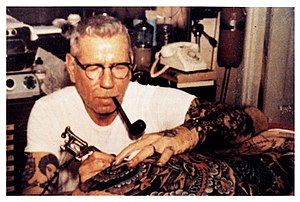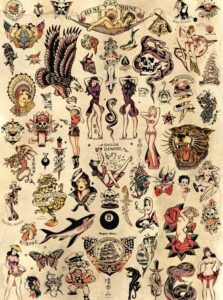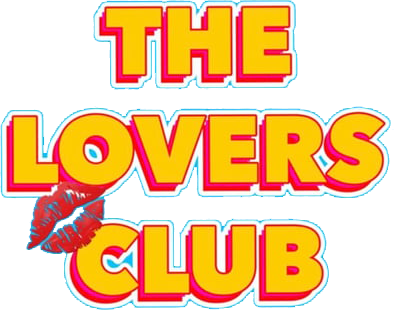
In the savage world of American traditional tattoos, where the ink flows like whiskey and the needles pierce the flesh with the force of a bullet, there lies a rich tapestry of history and rebellion. It’s a realm where sailors, outlaws, and rebels converge, leaving their mark on the skin and the soul of a nation.
To understand the roots of American traditional tattoos, one must dive headfirst into the murky waters of maritime lore. In the early days of seafaring, sailors adorned themselves with tattoos as a form of identification, a mark of their travels and adventures across the treacherous seas. These tattoos, characterized by bold lines, vivid colors, and iconic imagery like anchors, ships, and swallows, became emblematic of the seafaring lifestyle and the rugged individualism of those who sailed the seven seas.
But it was not only sailors who embraced the art of tattooing in America’s formative years. In the late 19th and early 20th centuries, tattoo parlors began to spring up across the country, catering to a diverse clientele that included circus performers, soldiers, and even members of high society seeking a taste of the forbidden. These parlors, often run by charismatic characters with names like “Sailor Jerry” and “Cap Coleman,” became havens for those seeking to express their individuality in an increasingly homogenized world.
As the years passed, American traditional tattoos evolved into a language of their own, with each design carrying its own symbolism and meaning. The rose, for example, symbolized love and beauty, while the dagger represented courage and strength in the face of adversity. Meanwhile, the iconic image of the American flag became a symbol of patriotism and pride, worn proudly by soldiers returning home from war.
But perhaps the most enduring symbol of American traditional tattoos is the iconic pin-up girl, a representation of femininity, sensuality, and the allure of the forbidden. These sultry sirens, with their hourglass figures and come-hither stares, adorned the arms of countless soldiers and sailors, serving as reminders of home and the promise of love in a world torn apart by war.
As the 20th century marched on, American traditional tattoos continued to evolve, influenced by cultural movements like punk rock and skateboarding. Artists like Ed Hardy and Lyle Tuttle pushed the boundaries of the art form, incorporating new techniques and styles while staying true to its rebellious roots.

Today, American traditional tattoos are more popular than ever, with people from all walks of life proudly wearing their ink as a badge of honor. From Hollywood celebrities to suburban soccer moms, the allure of American traditional tattoos transcends social boundaries, uniting people in a shared appreciation for art, history, and rebellion.
In the end, the history of American traditional tattoos is a story of defiance and individualism, a testament to the enduring power of ink to transform the body and the soul. As long as there are rebels and outlaws, sailors and soldiers, the tradition of American traditional tattoos will continue to thrive, a living testament to the spirit of freedom and adventure that defines the American experience.
